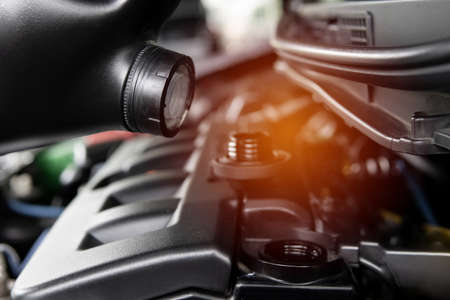1. Introduction to Uninsured and Underinsured Motorist Coverage
When youre out on the road, anything can happen. While most drivers have car insurance, not everyone has enough coverage—or any at all. This is where Uninsured Motorist (UM) Coverage and Underinsured Motorist (UIM) Coverage come into play. These coverages help protect you financially if youre involved in an accident with someone who doesnt have sufficient insurance to cover your damages.
What Is Uninsured Motorist (UM) Coverage?
Uninsured Motorist Coverage helps pay for your medical expenses, lost wages, and other damages if youre hit by a driver who has no insurance. This also applies to hit-and-run accidents where the at-fault driver cannot be identified.
Example Scenario:
Youre driving through an intersection when another car runs a red light and crashes into you. The driver has no insurance. With UM coverage, your insurance can step in to cover your medical bills and car repairs.
What Is Underinsured Motorist (UIM) Coverage?
Underinsured Motorist Coverage is for situations where the at-fault driver has insurance, but their policy limits arent enough to cover all your damages. UIM coverage helps make up the difference between what their insurance pays and the actual costs you incur.
Example Scenario:
Youre in an accident caused by a driver who has only the state-minimum liability coverage, which isnt enough to cover your medical expenses. UIM coverage helps bridge the financial gap.
Key Differences Between UM and UIM Coverage
| Feature | Uninsured Motorist (UM) Coverage | Underinsured Motorist (UIM) Coverage |
|---|---|---|
| Protects Against | Drivers with no insurance | Drivers with insufficient insurance |
| Applies in Hit-and-Run Accidents | Yes | No |
| Helps Cover Medical Bills | Yes | Yes |
| Helps With Property Damage | Varies by policy | Varies by policy |
Why These Coverages Matter
Many drivers assume that if they have car insurance, theyre fully protected. However, not all drivers follow the law or carry enough insurance to cover major accidents. Without UM and UIM coverage, you could be left paying out-of-pocket for medical bills, lost income, and vehicle repairs. Having these coverages is a smart way to protect yourself from financial hardship after an accident.
2. What is Uninsured Motorist Coverage?
Uninsured Motorist (UM) Coverage is a type of car insurance that protects you if you are in an accident caused by a driver who does not have auto insurance. It ensures that you are not left paying for medical bills, lost wages, and other expenses if the at-fault driver is uninsured.
What Does Uninsured Motorist Coverage Include?
UM coverage generally provides financial protection in the following situations:
- Bodily Injury (UMBI): Covers medical expenses, lost wages, and pain and suffering for you and your passengers.
- Property Damage (UMPD): Covers repairs to your vehicle if damaged by an uninsured driver (available in certain states).
When Does Uninsured Motorist Coverage Apply?
Uninsured Motorist Coverage applies in several common situations, including:
| Scenario | Does UM Coverage Apply? |
|---|---|
| You are hit by a driver who has no insurance | Yes |
| You are in a hit-and-run accident | Yes |
| The at-fault drivers insurance company denies their claim | Yes |
| You cause an accident | No |
Why is Uninsured Motorist Coverage Important?
Even though auto insurance is required in many states, a significant number of drivers still operate vehicles without coverage. If youre involved in an accident with an uninsured driver, you could be stuck with expensive medical bills and car repairs. UM coverage ensures that you receive compensation for your losses without needing to rely on the at-fault driver’s nonexistent insurance.
State Requirements for UM Coverage
Some states require drivers to carry uninsured motorist coverage, while others make it optional. It’s important to check your states car insurance laws to determine if its mandatory or recommended for your situation.
Key Takeaway
Uninsured Motorist Coverage provides essential financial protection if youre involved in an accident with a driver who has no insurance or in the case of a hit-and-run. Without this coverage, you could be responsible for medical bills and vehicle repair costs out of pocket.

3. What is Underinsured Motorist Coverage?
Definition of Underinsured Motorist Coverage
Underinsured Motorist (UIM) Coverage is a type of auto insurance that helps cover your expenses if you are involved in an accident caused by a driver who does not have enough insurance to pay for all the damages. This coverage ensures that you are not left paying out-of-pocket costs when the at-fault drivers insurance falls short.
Purpose of Underinsured Motorist Coverage
The main purpose of UIM coverage is to protect you financially in case you are injured or suffer property damage due to a driver with insufficient liability coverage. It helps cover medical bills, lost wages, and other expenses when the at-fault driver’s insurance limits are too low to fully compensate for your losses.
When is Underinsured Motorist Coverage Used?
There are several common situations where UIM coverage is useful. Here are some examples:
Situation |
How UIM Coverage Helps |
|---|---|
Serious Injury in a Car Accident |
If you suffer serious injuries in an accident caused by an underinsured driver, UIM coverage can help cover medical expenses that exceed the at-fault drivers policy limits. |
Multiple Injured Passengers |
When multiple people in your vehicle are injured, the at-fault driver’s insurance may not be enough to compensate everyone’s damages. UIM coverage can ensure that you and your passengers receive enough financial support. |
Extended Medical Treatment |
If your injuries require long-term medical care, rehabilitation, or physical therapy, UIM coverage can assist in covering these ongoing costs. |
Lost Wages Due to Injury |
When injuries prevent you from working, UIM coverage can help reimburse lost wages that exceed what the at-fault drivers policy provides. |
Underinsured Motorist Coverage is especially valuable in situations where medical expenses and other losses go beyond what the responsible drivers insurance can cover. Without UIM, you may have to pay these costs out of your own pocket.
4. Key Differences Between Uninsured and Underinsured Coverage
When it comes to protecting yourself on the road, both uninsured and underinsured motorist coverage play a critical role. While these coverages may seem similar, they address different scenarios and have distinct legal and financial implications. Understanding their differences can help you make informed decisions about your auto insurance policy.
Legal Differences
Each state has different laws regarding uninsured (UM) and underinsured motorist (UIM) coverage. Some states require drivers to carry UM coverage, while UIM coverage may be optional. Here are a few key legal differences:
| Aspect | Uninsured Motorist (UM) Coverage | Underinsured Motorist (UIM) Coverage |
|---|---|---|
| Legal Requirement | Mandatory in some states | May be optional in many states |
| Purpose | Covers you when the at-fault driver has no insurance | Covers you when the at-fault driver has insufficient insurance |
| Claim Process | Filed against your own insurance if the at-fault driver has no policy | Filed after the at-fault drivers policy limits are exhausted |
Financial Implications
From a financial perspective, both coverages can help prevent out-of-pocket expenses in case of an accident. However, the way they function differs:
- Uninsured Motorist Coverage: If you are hit by an uninsured driver, your UM coverage will help pay for your medical bills, lost wages, and other damages that the at-fault driver would have been responsible for.
- Underinsured Motorist Coverage: If the at-fault driver’s liability limits are too low to fully cover your expenses, your UIM coverage will step in to fill the gap, up to your policy limits.
Which One Offers Better Protection?
Both coverages serve an essential purpose, and having both UM and UIM coverage can provide the best financial protection. Without these coverages, you may end up paying significant expenses yourself if youre involved in an accident with an uninsured or underinsured driver.
5. Do You Need Both Coverages?
Deciding whether to get both Uninsured Motorist (UM) and Underinsured Motorist (UIM) coverage depends on several factors, including state requirements, your personal financial situation, and your risk tolerance. While these coverages are optional in some states, they provide a crucial safety net in case of an accident with a driver who has little to no insurance.
Factors to Consider
To help determine if you need both UM and UIM coverage, consider the following factors:
1. State Requirements
Some states require drivers to carry UM or UIM insurance, while others make it optional. Check your states laws to ensure compliance. Even if its not mandatory, having both coverages can be beneficial.
2. Prevalence of Uninsured Drivers
According to research, the percentage of uninsured drivers varies by state. If you live in an area with a high number of uninsured motorists, UM coverage is especially important.
3. Your Current Auto Insurance Policy
Review your existing liability coverage limits. If your policy provides sufficient coverage to handle damages caused by an underinsured driver, you may not need UIM. However, if your policy limits are low, adding UIM can offer better protection.
4. Cost vs. Benefit
UM and UIM coverage typically come at a reasonable cost compared to the potential financial impact of an accident with an uninsured or underinsured driver. Heres a comparison:
| Coverage Type | What It Covers | Estimated Cost | Potential Benefit |
|---|---|---|---|
| Uninsured Motorist (UM) | Accidents caused by at-fault drivers with no insurance | Low to moderate | Medical expenses, lost wages, and other damages |
| Underinsured Motorist (UIM) | Accidents where the at-fault driver has insufficient coverage | Low to moderate | Additional compensation beyond the at-fault driver’s policy |
5. Your Personal Financial Situation
If you don’t have substantial savings or other financial resources to cover medical expenses and vehicle repairs in case of an accident with an uninsured or underinsured driver, having both UM and UIM coverage is a smart decision.
Final Thought
If you can afford it, carrying both coverages provides comprehensive protection against unpredictable drivers on the road. Its always wise to evaluate your specific circumstances and consult your insurance provider to determine the best coverage options for your needs.


